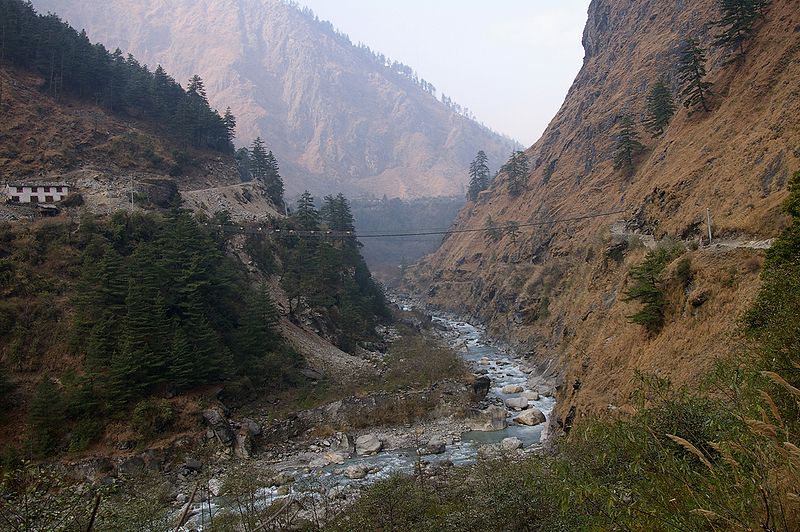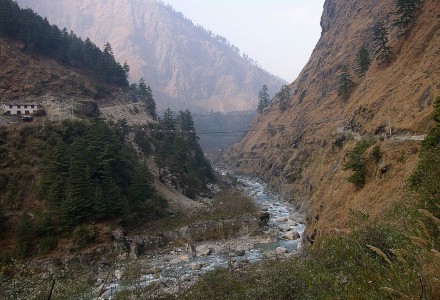
Kali Gandaki Gorge Facts
- Firstly, the magnificent and awe-inspiring Kali Gandaki Gorge formed in an extremely remote and secluded portion of the world.
- In the distant past, it also played a pivotal economic role in its region. This was due to its serving as a vital trade route between countries as they developed.
- Most notably, if you judge a canyon’s depth by the difference between the water surface and the height of the highest neighboring peak, it is the deepest on earth.
- Finally, despite the harshness of the local terrain, the magnificent gorge remains popular. This is because the majority of tourists to the region come to hike its many trails.
Related Articles
Kali Gandaki Gorge Physical Description
Firstly, judging the depth of the magnificent Kali Gandaki Gorge by the height of the surrounding mountains, it has a depth of 18, 278 ft (5,571 m).
This stunning gorge formed between and still separates two rather high peaks, bearing the names of Dhaulagiri and Annapurna.
Furthermore, these two mountains tower over the local landscape, measuring 26,795 ft (8,167 m) and 26,545 ft (8,091 m) respectively.
Also, the water surface in the gorge sits at an elevation of about 8,270 ft (2,520 m). The difference in elevations, therefore, creates the deepest known gorge.
Kali Gandaki Gorge Location, Formation, and Importance
The truly quite breathtaking Kali Gandaki Gorge formed high in the Himalayas, in Asia, in the region that now forms the country of Nepal.
It formed due to the combined effects of tectonic activity forcing the mountains higher, and the erosive effects of the flowing water.
The site also serves a relatively abundant source of shaligram fossils. These are fossilized seashells from when the region was under an ancient ocean.
Fortunately for those who love both Nature and history, the region now lies within the Annapurna Conservation Area.
Finally, the region was also the original home of a local indigenous people, the Thakali, the majority of whom now live elsewhere.
Features Sharing Its Region
Check out our other articles on Wonderful Wild Cats of the World, Gharial, Northern Bald Ibis, Kalanchoe, Tasselled Wobbegong, Perdita Minima

